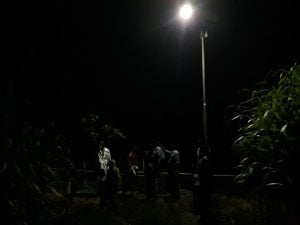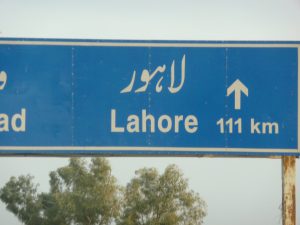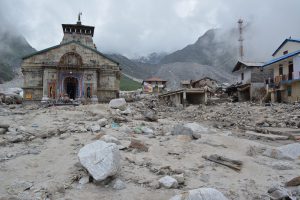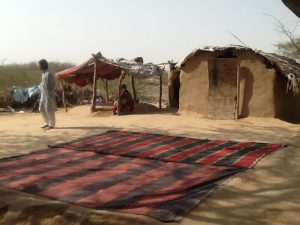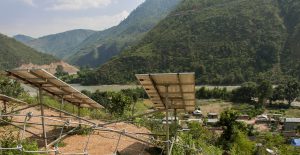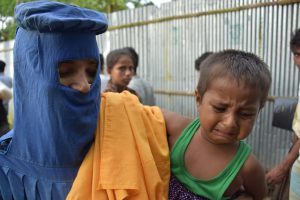In the desperate scramble to flee military bullets, Rokeya Begum lost track of her husband. With her five children and elderly mother, she trudged through blinding rain that turned mud tracks over hilly terrain into clay quagmires to cross the international border into the relative safety of Bangladesh.
“It took five days to reach Bangladesh,” she told thethirdpole.net while recounting her ordeal. Living in a makeshift camp in Moinar Ghona in Cox’s Bazar district, Rokeya – who is three months pregnant – doesn’t know the whereabouts of her husband, or indeed if he is still alive. For now, she is thankful that her children have escaped the military attack in Bolirbazar, in the Maungdaw district of Rakhine state in Myanmar. Feeding her kids and mother is the challenge that Rokeya must face every day, with no thoughts to what the future holds for her family.
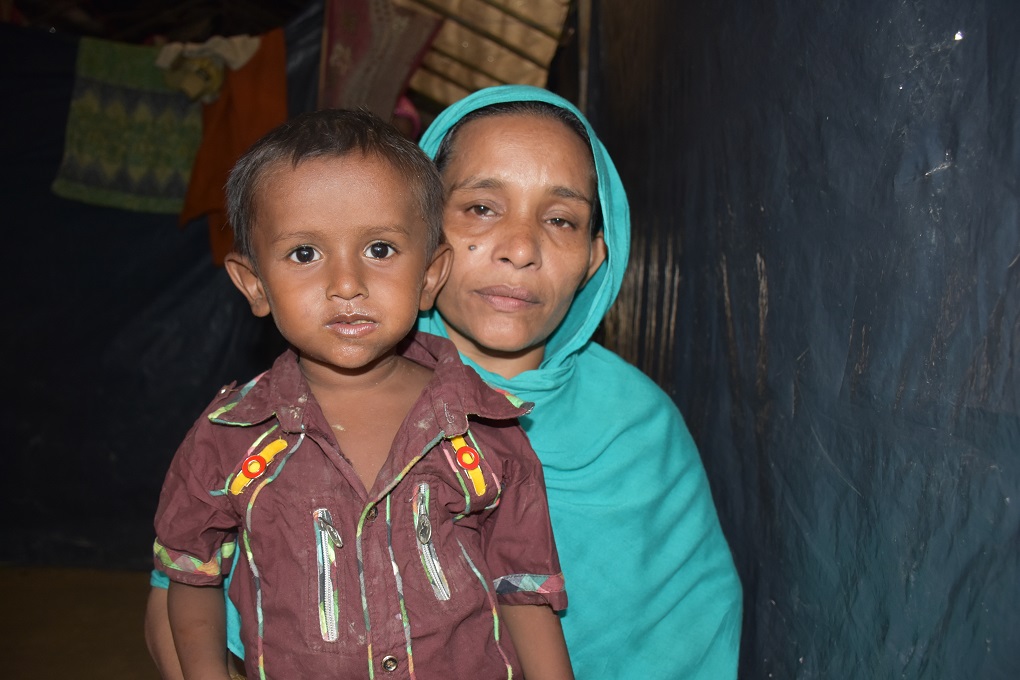
Rohingya refugees are flocking daily to temporary settlements in Cox’s Bazar and Bandarban in Bangladesh, joining the 307,500 refugees already living in cramped camps. As the influx shows no signs of stopping, the Bangladesh government and UN agencies are stretched to the limit.
Not just religious
The atrocities directed against the Rohingya are widely viewed as a religious conflict between Myanmar’s dominant Buddhist population and the mostly Muslim population in Rakhine, the second poorest state in the country. In the continuing humanitarian crisis due to the massacres and mass migration, other dimensions to the crisis are sometimes lost – namely an appropriation of natural resources by the state, and the prospect of supernormal profits from huge planned infrastructure development by the rich and influential.
An advisory commission, led by former United Nations Secretary General, Kofi Annan, released a final report on Rakhine state, recommending a slew of measures to ensure peace and stability in the region. “Unless concerted action — led by the government and aided by all sectors of the government and society — is taken soon, we risk the return of another cycle of violence and radicalisation, which will further deepen the chronic poverty that afflicts Rakhine State,” said Annan on August 24. The next day the Arakan Rohingya Salvation Army coordinated an attack on 30 police check posts, and the Myanmar military reacted with a wholesale massacre and the widespread burning of villages and settlements.
The advisory commission’s report also hinted at economic aspects that are rarely acknowledged. “Although Rakhine is rich in natural resources, the development of extractive industries — such as oil and gas-related investments in Kyawkpyuh — has not generated a significant number of new jobs nor other benefits for local residents,” stated the report. “Both Rakhine and Muslim communities feel marginalised and disempowered by decisions taken in Naypyitaw [the Myanmar capital].”
Economic interests
Although the condemnation implied in the commission’s view is expressed mildly, it points indirectly to the political and economic interests as contributing factors not just to the forced displacement of the Rohingya, but also to the exploitation of other minorities in Myanmar, such as the Karen, the Kachin, the Shan and the Chin.
In 2011, Myanmar instituted political and economic reforms and opened up the country, dubbed as Asia’s final frontier, to foreign investment. After elections in 2015, Suu Kyi’s National League for Democracy (NLD) party took office in April 2016. Several countries, including India and China, showed eagerness in investing in development projects across Myanmar.
India is implementing several infrastructure projects aimed at accessing Myanmar’s rich natural resources, improving connectivity between the two countries, and facilitating bilateral travel and trade. The 1,400km India-Myanmar-Thailand (IMT) highway links Moreh in the northeastern Indian state of Manipur with Mae Sot in Thailand via Kalewa and Kalemyo in Myanmar. It will be the first overland link between India and Southeast Asia, and will pass through Rakhine state.
Meanwhile China is investing in a USD 7.3 billion project to develop a seaport in Rakhine, which will advance China’s One Belt One Road programme and connect the country to the Bay of Bengal. It also has plans for an industrial park and a special economic zone in the region.
In Rakhine, the projects are touted as providing employment to local residents and generating oil and gas revenues for Myanmar, and the economic interests of the Asian giants are seen as the main reason for their tacit support of the Myanmar government. Most of the Rohingya coping with the trauma of flight into Bangladesh are unaware of many such development projects running through their land, but some do have an inkling.
Land grab
The memories of terror are still fresh for Mohammad Ismail, who fled to Balukhali camp in Ukhia administrative block, Cox’s Bazar, a month ago. “My uncle, who used to live just beside our house, was killed by the military,” he said. “Lots of women in our village were raped and killed. They burnt our houses and we had no other way to escape the violence. Finally, we fled to Bangladesh to save our lives.”
Hailing from a village near Maungdaw – the westernmost town in Myanmar – Ismail suspects that the pogrom by the military and Buddhist militia has motivations other than religious. “We have been living in our village for generations. Last year, the township chairman (mayaka) came to our village and asked us to go away,” he told thethirdpole.net. “They said they need our land because they would construct a highway. They acquired our land in the name of development.”
Amid the crisis, land grabs carried out by the government’s army-backed cronies and foreign companies for constructing large strategic projects continue to grow in Myanmar, according to Environment, Conflict and Cooperation, a global online platform. The massive development planned in Rakhine also has grave implications for the environment.
Influx continues
Meanwhile, the number of newly arrived Rohingya in Bangladesh has reached 607, 735, according to the Inter Service Coordination Groups, which consists of the UN and other international organisations working in Cox’s Bazar. They have been living in different camps and host communities in four sub-districts of city. Among them, 53% are women and girls, 4% are over 60 and 29% are under five. The majority of this population come from the Maungdaw district of Rakhine state.

Last month in Geneva, the UN’s refugee agency called for the international community to double its humanitarian outreach in order to respond to the burgeoning refugee situation in south-eastern Bangladesh. The Bangladeshi government announced last week that it planned to build separate shelters for some 6,000 Rohingya children who had arrived across the border alone.
The refugees are also setting up shelters in reserve forests in Kutupalong and Balukhali, with little option but to cut down trees and damage the habitat. Many parts of the 30,000 acres of forestland in Ukhia have already been razed to the ground, according to experts.
As the horror of genocide and mass migration continues, the stateless Rohingya are staring at a bleak future. Rokeya Begum may have saved her children for now, but the abysmal conditions at the refugee settlements is sure to pose the danger of disease. And, even if they survive that, no one seems to have an idea of what the future may hold for them.
![<p>Women and children are the main sufferers of this huge crisis. Among the Rohingya refugees, 53% are women and girls, 4% are over 60 and 29% are under five. They are suffering from diarrhoea, malnutrition and pneumonia [image by: Zobaidur Rahman]</p>](https://dialogue.earth/content/uploads/2017/10/Women-and-children.jpg)

